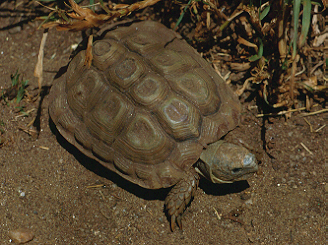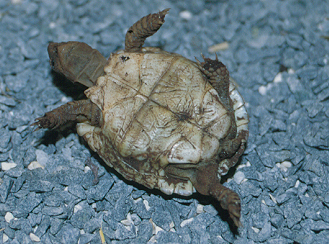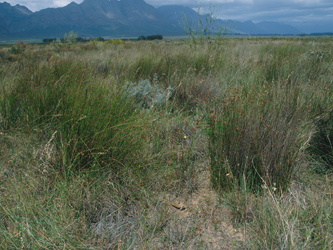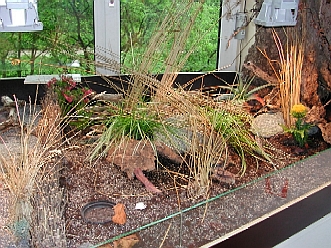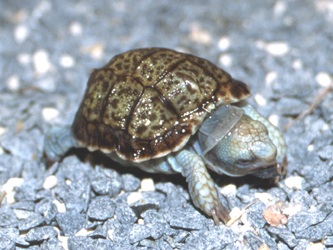
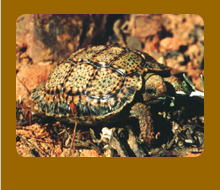 |
|
Homopus areolatus Description Homopus areolatus grows up to about 12 cm, making it a medium-sized dwarf tortoise. This species does not have buttock tubercles, or they are very small, and males do not have concave plastrons. The heads of males are larger than female heads, and typically develop a red colouration on the nose in spring. Although females may develop a similar colouration of the nose, it appears to be more frequent in males. The carapace of female tortoises is uniformly dark coloured (grey, brown, olive), compared to males that have lighter coloured carapaces. Females produce clutches that consist of one to four eggs.
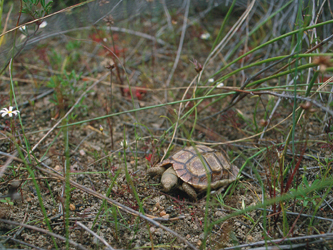 Homopus areolatus juvenile foraging in the wild. Homopus areolatus occurs in the southern coastal area of South Africa, which is relatively moist (Mediterranean climate). It is bordered by East London in the east and the Atlantic coast in the west. Inland populations reach as far north as Middelpos (possibly isolated population). The primary rainfall season is winter, but occasional rains fall in other seasons. Homopus areolatus is the only dwarf tortoise species that is not associated with a rocky habitat. In addition, it can be found in various vegetation types (coastal heathland, thornveld, valley and mountain bushveld, transitional zone from forest to shrubland). There is little published information on the habits of H. areolatus in the wild. In areas where the winter temperature remains sufficiently high, the species is active throughout the year. In some areas, their habitat can be extremely humid in winter and spring, with a soil substrate saturated with water. Drier conditions develop in summer. Homopus areolatus is a very alert and agile species, and is able to move with great speed compared to other tortoises.
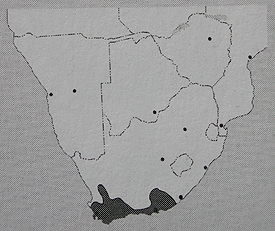 Distribution range of Homopus areolatus (from Branch 1998). Homopus areolatus is kept and bred on a regular basis in the EU, although results are a bit behind on C. signatus. For H. areolatus, a caresheet is available. Further husbandry information can be found in the annual reports of Dwarf Tortoise Conservation. Many of the H. areolatus that were imported into the EU legally, and their offspring, are registered in a studbook. This website provides an up to date overview of the studbook population.
|
